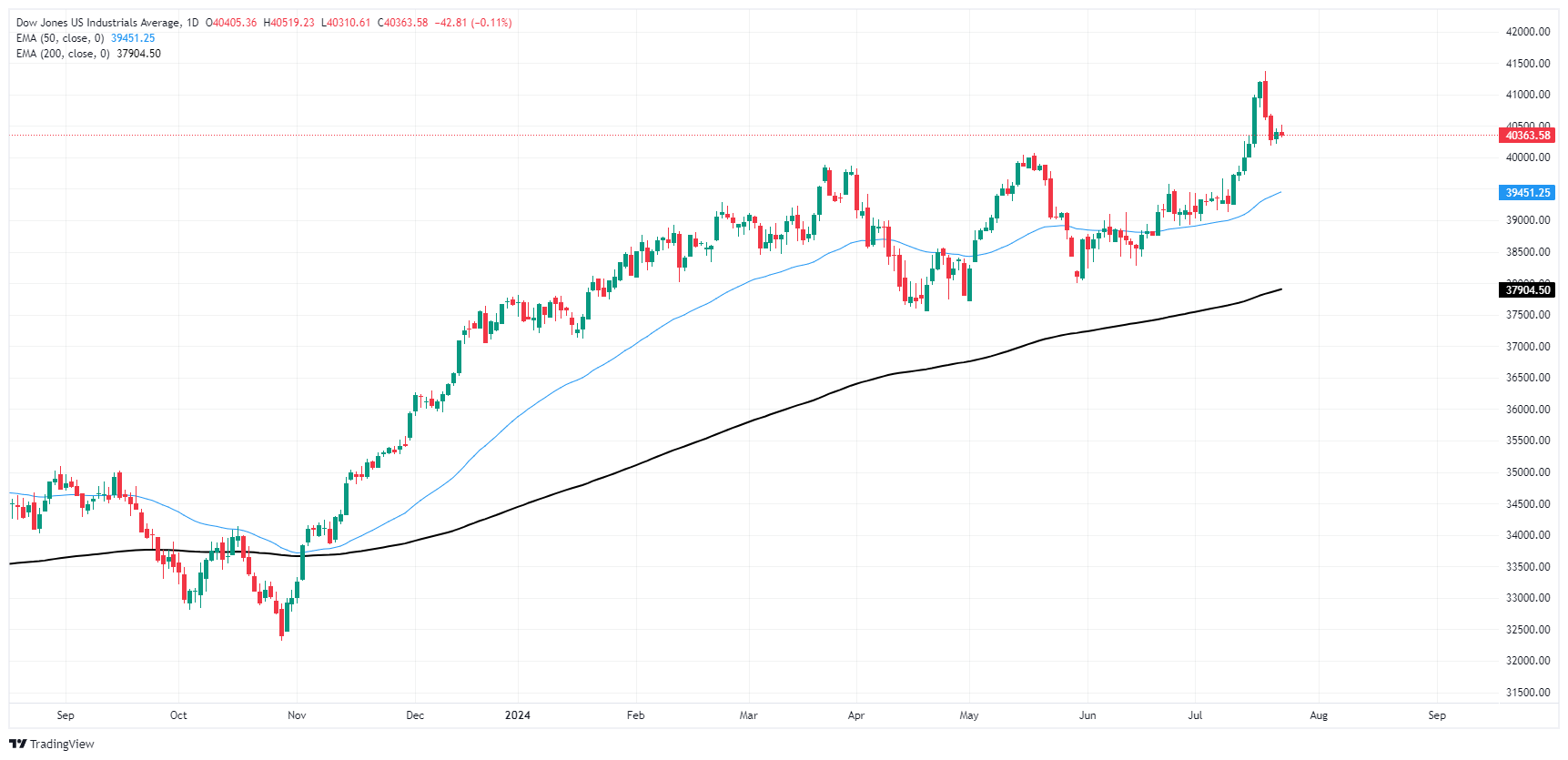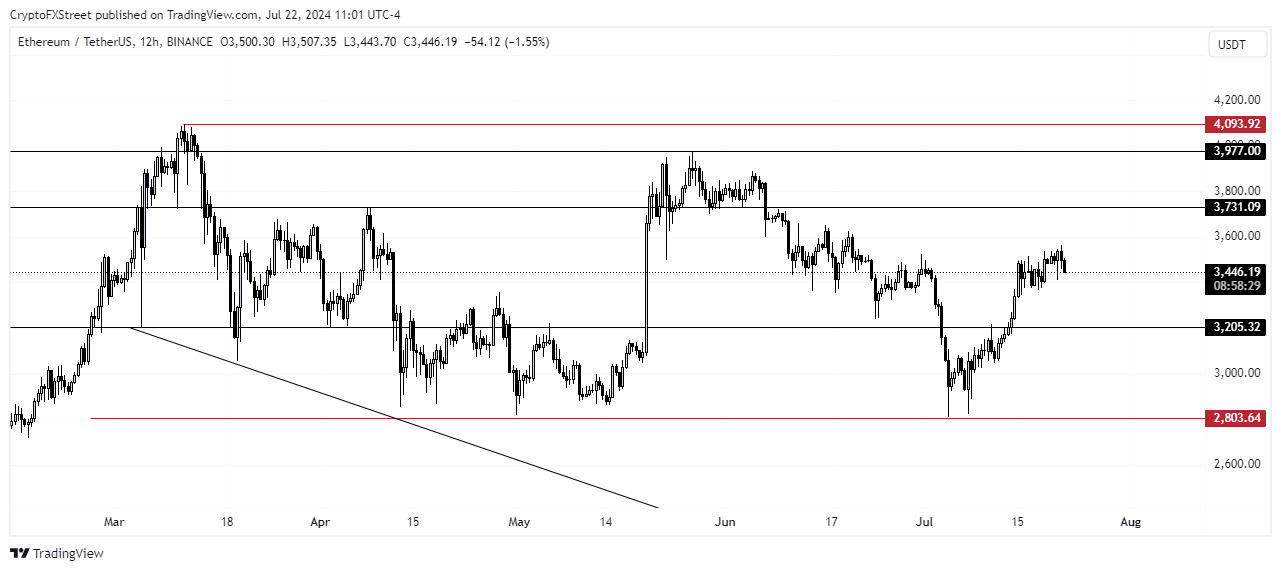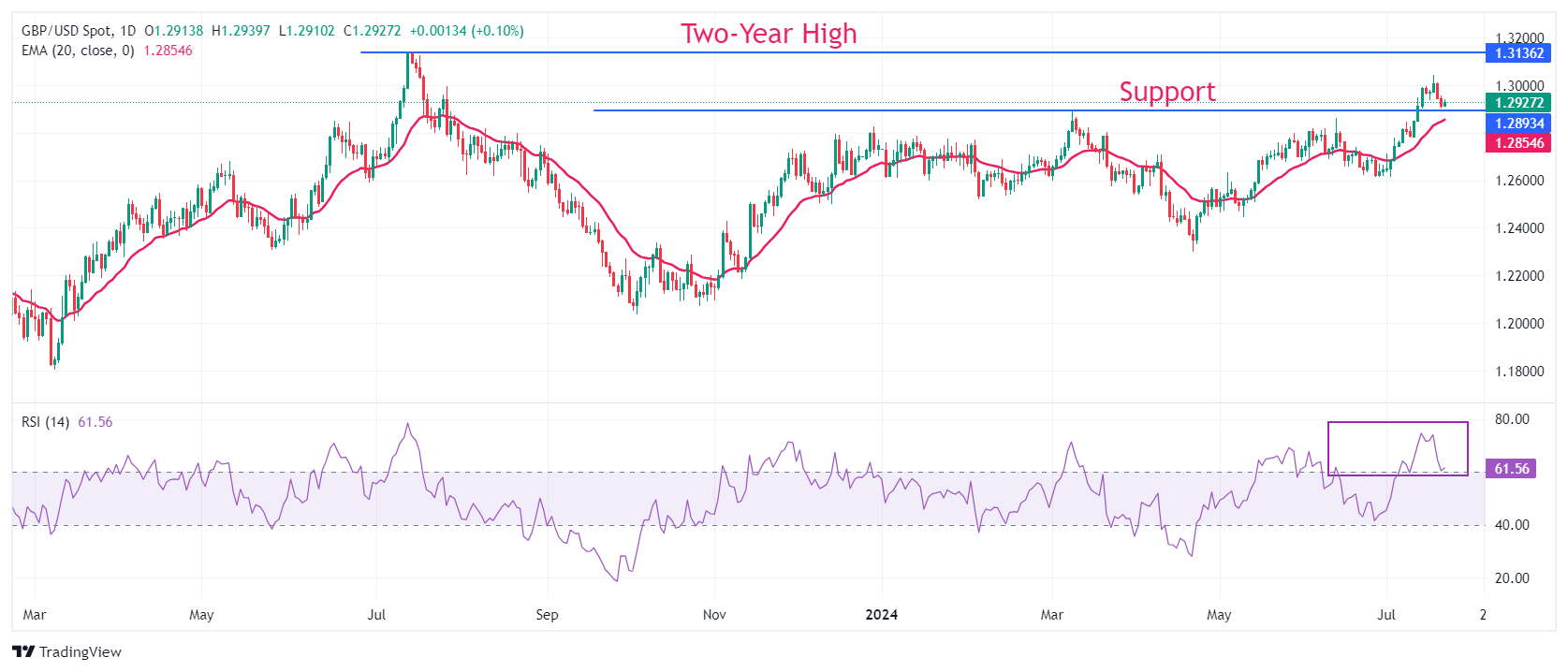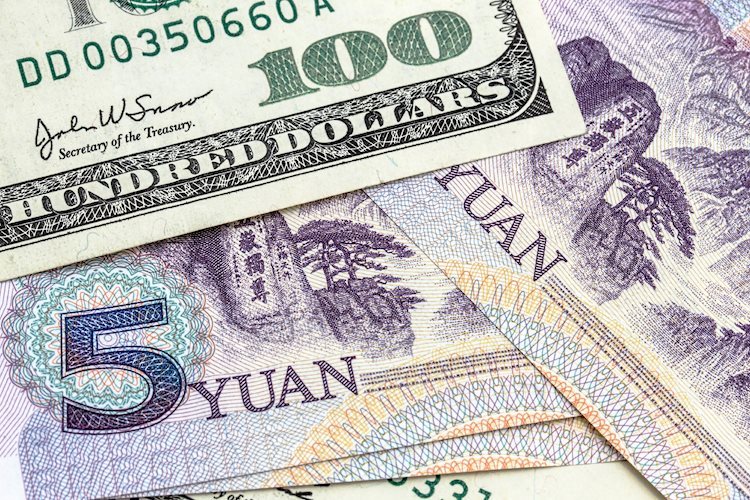- The Dow Jones failed to make meaningful headway on Tuesday.
- A trio of US data prints loom overhead throughout the week’s back half.
- With hopes of a September rate cut pinned, traders will be hoping for easing data.
The Dow Jones Industrial Average (DJIA) went nowhere fast on Tuesday, sticking close to the day’s opening bids as investors shuffle their feet ahead of a hectic US data schedule in the back half of the trading week. Wednesday will be kicking things off with a fresh print of S&P Global Purchasing Managers Index (PMI) activity survey figures. Markets are expecting a lopsided print with a slight uptick in the Manufacturing PMI and a deceleration in the Services PMI component.
Thursday will follow up with an update to US quarterly Gross Domestic Product (GDP) in Q2. Friday will close out the trading week and the US data docket with Personal Consumption Expenditure Price Index (PCE) inflation figures.
With markets broadly pricing in a September rate cut as a sure thing, investors will be looking for softening data from the US, specifically a continued easing in PCE inflation. According to the CME’s FedWatch Tool, rate markets are pricing in nearly 100% odds of at least a quarter-point rate trim when the Federal Open Market Committee (FOMC) meets on September 18th.
Dow Jones news
Despite trading relatively flat on Tuesday, most of the Dow Jones’ constituent securities are tilted towards the downside, with nearly two-thirds of the index’s listed stocks seeing red. However, steeper gains in key sectors are keeping headline index tickers in the midrange.
Boeing Co. (BA) rallied 3.5% on Tuesday to $185.18 per share, while Amazon.com Inc. (AMZN) climbed 2.67% to $187.41 per share. Walt Disney Co. (DIS) fell -3.8% to $90.53 per share as India’s Competition Commission weighs a move to block Disney’s merging with Reliance. A merger between the two media companies would represent a 40% market share of television advertising in India. Teamsters at Disneyland also voted to authorize a strike in order to force Disney to the negotiating table to improve worker conditions, which could significantly impact Disney’s operations.
Dow Jones technical outlook
The Dow Jones appears to have pumped the brakes on a near-term decline from record highs set at 41,371.38 last week, however it could be a while yet before a bullish rebound takes shape. Price action continues to trade well above the 200-day Exponential Moving Average (EMA) at 37,882.57, while a pullback to the 50-day EMA at 39,449.38 could see a renewed push back into the topend.
Dow Jones daily chart
Economic Indicator
S&P Global Services PMI
The S&P Global Services Purchasing Managers Index (PMI), released on a monthly basis, is a leading indicator gauging business activity in the US services sector. As the services sector dominates a large part of the economy, the Services PMI is an important indicator gauging the state of overall economic conditions. The data is derived from surveys of senior executives at private-sector companies from the services sector. Survey responses reflect the change, if any, in the current month compared to the previous month and can anticipate changing trends in official data series such as Gross Domestic Product (GDP), industrial production, employment and inflation. A reading above 50 indicates that the services economy is generally expanding, a bullish sign for the US Dollar (USD). Meanwhile, a reading below 50 signals that activity among service providers is generally declining, which is seen as bearish for USD.
Next release: Wed Jul 24, 2024 13:45 (Prel)
Frequency: Monthly
Consensus: 54.4
Previous: 55.3
Source: S&P Global









